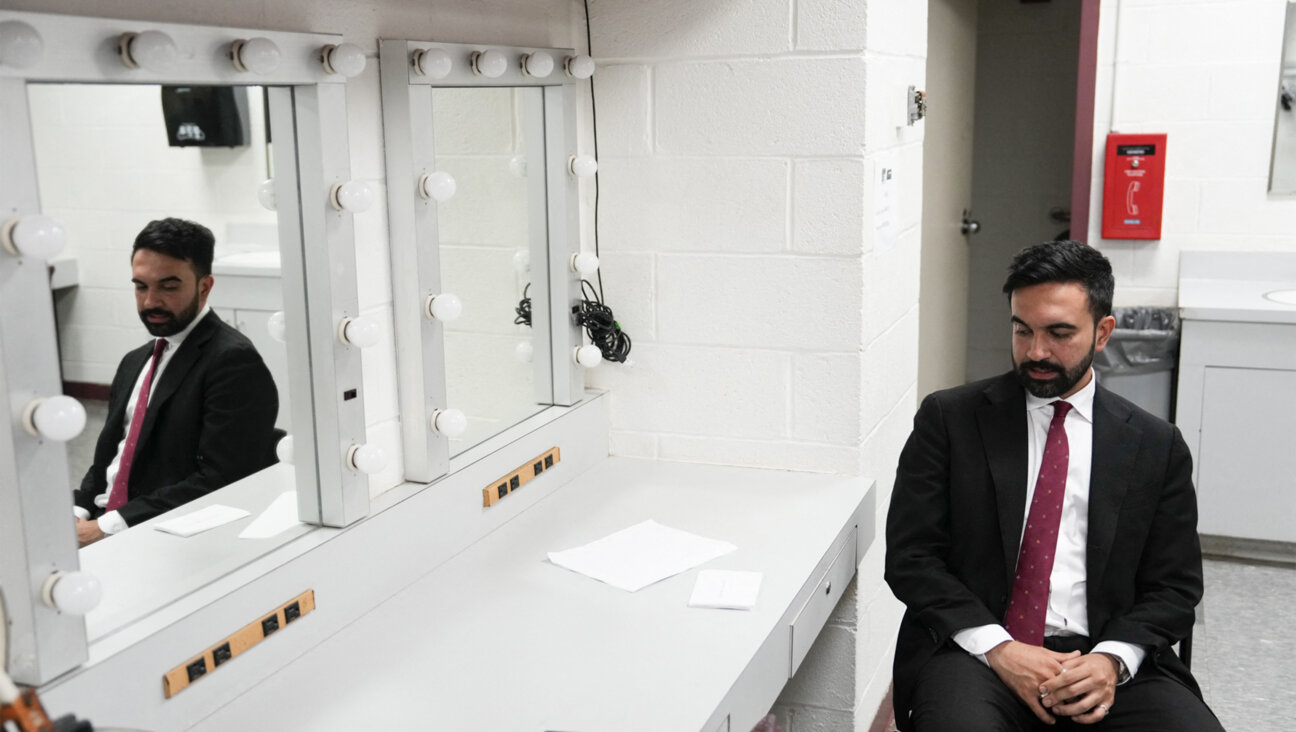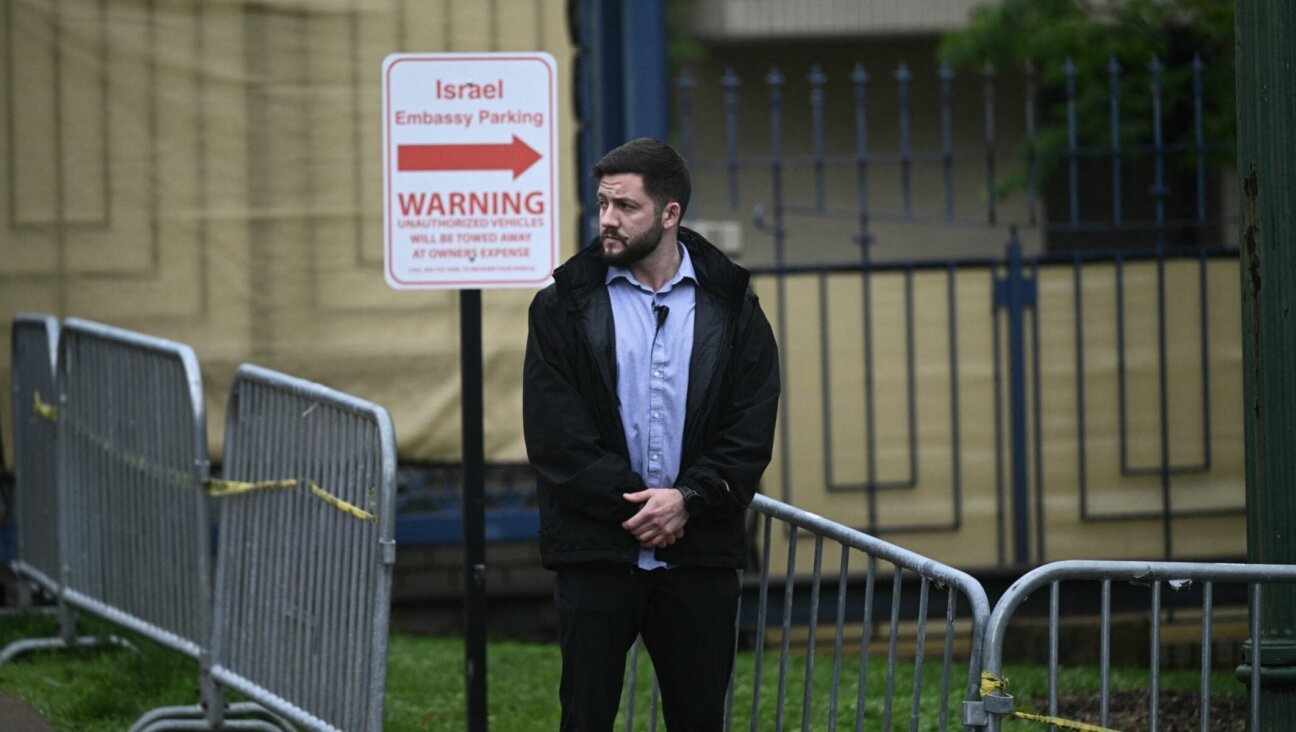New Satellite Images Bolster Israel’s Case, But Also Help Its Enemies To Aim
Palestinian militants are using the popular satellite mapping program Google Earth to choose targets for their rockets, a British newspaper reported last week. The report, in the left-leaning Guardian of London, followed repeated complaints that Google’s upgraded mapping program endangers Israel’s security by providing details of sensitive sites.
The Guardian reported that Gaza-based members of the al-Aqsa Martyrs Brigade, a group aligned with the Fatah party of Palestinian leader Mahmoud Abbas, were surfing on Google Earth to determine where to aim their weapons.
At the same time, new satellite images have bolstered claims that a September 6 Israeli air raid in Syria was indeed targeting a partially constructed nuclear plant. Since the raid, Israel and the United States have refused public comment on the nature of the target, which Syria claims was an abandoned military site. But satellite images made public last week, showing a barren desert site along the Euphrates River before and after the raid, have convinced independent experts, including the Washington-based Institute for Science and International Security, to assert that the complex likely housed a small nuclear reactor built with North Korean help. The claim has been seconded by anonymous American administration and intelligence officials.
“The bottom line is that commercial high resolution satellite images cuts both ways – it can endanger security by exposing classified and sensitive information, and it can also expose information that justifies preventive military action without revealing sensitive intelligence capabilities,” said Gerald Steinberg, the director of the the Program on Conflict Management at Bar-Ilan University.
The two developments indicate that amid growing government complaints over security threats posed by companies making high-resolution satellite imaging available to the public, the companies’ products can also serve as a means of achieving diplomatic goals.
The Gaza report is not the first time that Google has been accused of unwittingly abetting the activities of militant or terrorist groups. In January, British officials claimed that insurgents sympathetic to Al Qaeda were using Google images to identify targets inside British bases around the southern Iraqi city of Basra.
Steinberg noted that Palestinian rockets had no guidance system and, as such, satellite mapping technology was of no use to them, although higher resolution might be of help to suicide bombers by pinpointing their targets in Israeli areas they are not familiar with.
“We have paid close attention to concerns that Google Earth creates new security risks,” Megan Quinn, a Google spokeswoman, wrote in an e-mail. She added that Google was merely posting images produced by a range of commercial and public data sources. “Google has engaged, and will continue to engage, in substantive dialogue with recognized security experts and relevant agencies worldwide,” Quinn wrote.
To New York State Assemblyman Michael Gianaris, though, action must back up the words.
“I have tried to get their attention on this issue for several years, but they have not been responsive and the latest reports from Israel show that their attitude is irresponsible,” Gianaris told the Forward. “Right now, there is no clear process to vet the images, and I would like to see one put in place.”
Gianaris said he first became concerned in 2005, when several sensitive sites in his Queens district, including power plants and a liquefied gas facility, appeared on publicly available satellite imagery. He wrote to Google CEO Eric Schmidt in August 2005 and again in January 2006, urging the company to take appropriate steps. The response was noncommittal both times, he said. In June of this year, following disclosures that the plotters of a foiled terrorist attack against John F. Kennedy International Airport in Queens had used Google Earth, State Comptroller Thomas DiNapoli jumped into the fray. He and Gianaris fired off a joint letter to Google, urging it to ensure that its Internet-based mapping services do not undermine government counterterrorism programs.
“New York has invested hundreds of millions of dollars to make public spaces less vulnerable to terrorist attacks,” DiNapoli said in a statement accompanying the June letter. “The technology is remarkable, but we can’t allow innovation to work against public safety and security.”
DiNapoli is the trustee of the $154.5 billion New York State Common Retirement Fund, which has extensive holdings in companies providing Internet mapping services. While Google has not formally answered the letter, DiNapoli spokesman Robert Whalen said that the public claims from the company that it was consulting with experts and government constituted a positive step. The company had previously rejected any responsibility, insisting it was merely relaying data offered by other sources who bear primary responsibility for content. Google noted that its suppliers sometimes provide blurred or degraded images, such as the official residence of Vice President Dick Cheney.
Despite those arguments, the iconic California-based company has come under repeated attack in Israel, where its stated “mission to organize the world’s information and make it universally accessible and useful” has clashed with stringent rules of secrecy in security matters.
Early last month, Yediot Aharonot, the largest Israeli daily, published front-page photographs of Israel’s most sensitive sites, downloaded from an upgraded version of Google Earth. The paper claimed they were an “asset” to enemy states and a “treasure” to terrorists. The latest version of the program shows sites regarded by the government as sensitive — such as the nuclear research center in the Negev city of Dimona, the headquarters of the Mossad, the location of the Arrow missile defense system and the Defense Ministry compound in Tel Aviv.
All are heavily guarded, and reporters in Israel are forbidden by military censors to photograph or disclose any details about these locations.
“This contains a stock of information in which any intelligence body would be willing to invest a great deal of money and effort in order to get its hands on it,” Yediot security correspondent Alex Fishman wrote.
But Steinberg countered that Israel has been prepared for the new Google Earth images. After years of haggling, he said, Israel and America reached an agreement under the Clinton administration limiting satellite resolution over Israeli territory. The latest Google Earth respects the agreement’s limits and does not endanger Israel’s security, Steinberg said.






















